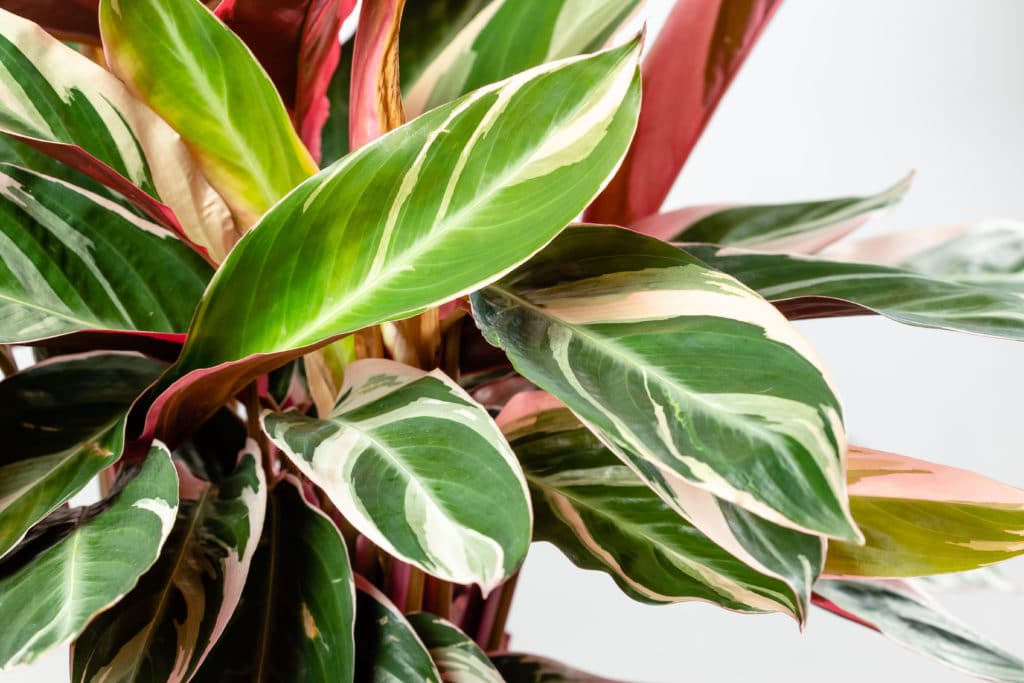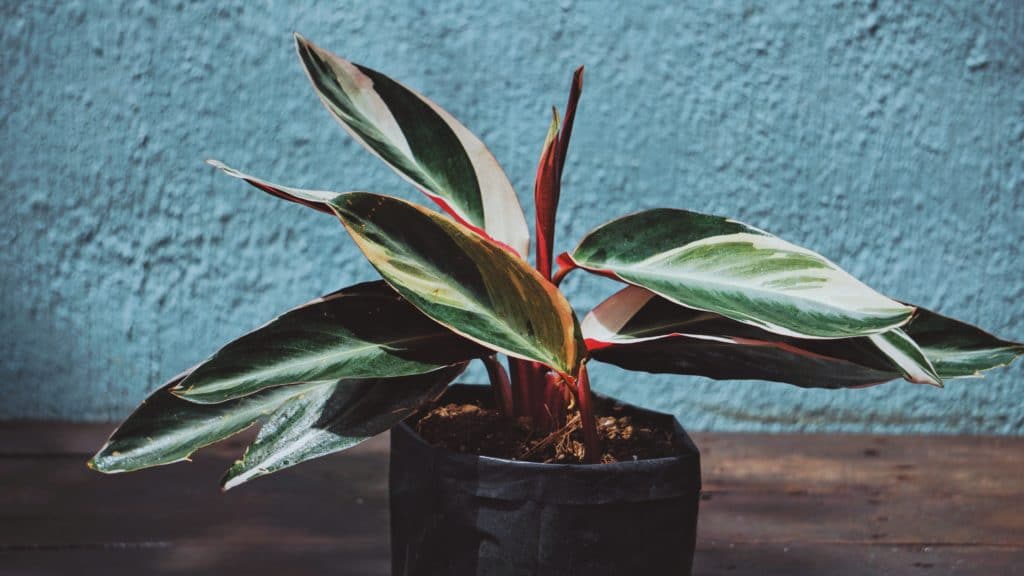
One of the most beautiful plants in existence, Calathea Triostar care instructions are not as complicated as you might think. These stromanthe triostar plants love the sun but can get damaged easily if they are exposed to any direct light.
We recommend finding a spot with plenty of indirect light. You may want to adjust where you place your plant depending on the seasons and the sun’s strength.
The Triostar stromanthe plant (Stromanthe sanguinea or Stromanthe thalia, commonly known as tricolor stromanthe) is one of the finest ways to add a burst of color and dreamy tropical vibes to your space with its vivid pastel stripes.
With enough care, these complete, vibrant houseplants will develop two to three feet tall and one to two feet broad at maturity.
They appreciate bright, indirect illumination.
The Calathea plant can be damaged by direct light, however, they love sunshine. We propose locating a location with lots of indirect light if possible.
Depending on the seasons and the sun’s strength, you might want to position your plant differently. A light monitor is an excellent method to see whether your plant is receiving adequate illumination.
If you decide to move your stromanthe plant, it is a good idea to gradually wean it off its current bright light conditions. To do this, first cut back on the number of hours of exposure each day and then adjust up or down depending on how your stromanthe responds.
Keep the soil slightly damp, but not wet.
Water your stromanthe plant when the top inch of soil feels dry to the touch. Be careful not to overwater, as this can be detrimental to your stromanthe’s health. Allow the potting mix to become nearly dry before watering again.
Remember the difference between waterlogged and moist soil. If your Calathea Triostar is kept in water for an extended period of time, the roots will rot and the plant will soon droop and become mushy. Before you water, check the top few inches of the soil mix to make sure it isn’t too dry or wet.

A humid atmosphere is required for Calatheas Triostars.
You will want to keep stromanthe in a room that is relatively humid. Calathea Triostar Love humidity and moisture, but they also need good airflow as well. Keep stromanthes away from drafty areas or vents where the air-conditioning may be blowing cool air directly on it.
If you have a place in your home with high humidity (kitchen sink) put some pebbles at the bottom of an empty plant pot, pour water into this container so about halfway up the side of the plant pot then set the stromanthe inside this rustic looking planter. This allows for proper drainage while still offering plenty of moisture around stromanthe leaves.
Make sure to check often! It is easy for stromanthe to get root rot if the water gets too high.
Calatheas hate chilly conditions.
Your stromanthe plant will need a temperature between 65-85 degrees Fahrenheit to grow well. If the temperature falls below 60 or goes above 90 degrees, your stromanthe may suffer. Keep an eye on the weather and make sure to adjust accordingly.
Calathea Triostars grow well in areas with plenty of indirect sunlight. They prefer slightly warmer temperatures, so look for a nice warm location for your Calathea Triostar.
Because the cold air can induce long-term shock, be careful not to put your plant near AC vents or any drafty windows or doors.
We always use a digital thermometer to check the location of our plants. They will help prevent drafts and hotspots by checking the spot frequently.
In the growth period, fertilize your Calathea Triostar.
Fertilize your stromanthe once per month during spring and summer with a water-soluble fertilizer at half-strength.
Use any houseplant fertilizer that has suitable numbers on the package and follow instructions carefully for best results.
Some people also use plant food or compost to keep stromanthe healthy, but we wouldn’t recommend it as you run into some problems such as overfertilizing, which can lead them being burned by too many nutrients in their soil, not to mention killing your plants!
After growing stromanthe till they are between 12″ – 24″ tall, cut back hard on feeding until new growth emerges from the center of leaves then begin again at full strength.
The Calatheas are nontoxic.
The Calathea Triostar is a wonderful option for trees because they are non-toxic to both pets and people, so you won’t have to worry about them being in reach. They are also a good choice if you want to use stromanthe as trees in your home or office because they can thrive indoors with little care.
Divide your Calathea Triostar to propagate it.
If your stromanthe triostar is starting to look a bit droopy and you think the plant may be dying, then try dividing it. This will let your stromanthe grow more quickly than growing from seed, which can take months before sprouting new ones.
The most effective time to propagate a Calathea Triostar is in the spring, during the growth period, since it has the greatest chance of success. The mother plant should be plunged and placed in new dirt. Make sure each new plant includes at least half of the root system.
Calathea Triostar need to have their branches trimmed on a regular basis.
Trim any browning or decaying leaves to avoid losing too much leaf mass. Make sure there are at least four inches of space between the top of your soil line and the lowest pair of leaves hanging over it; otherwise, there may not be enough room for blooms!
